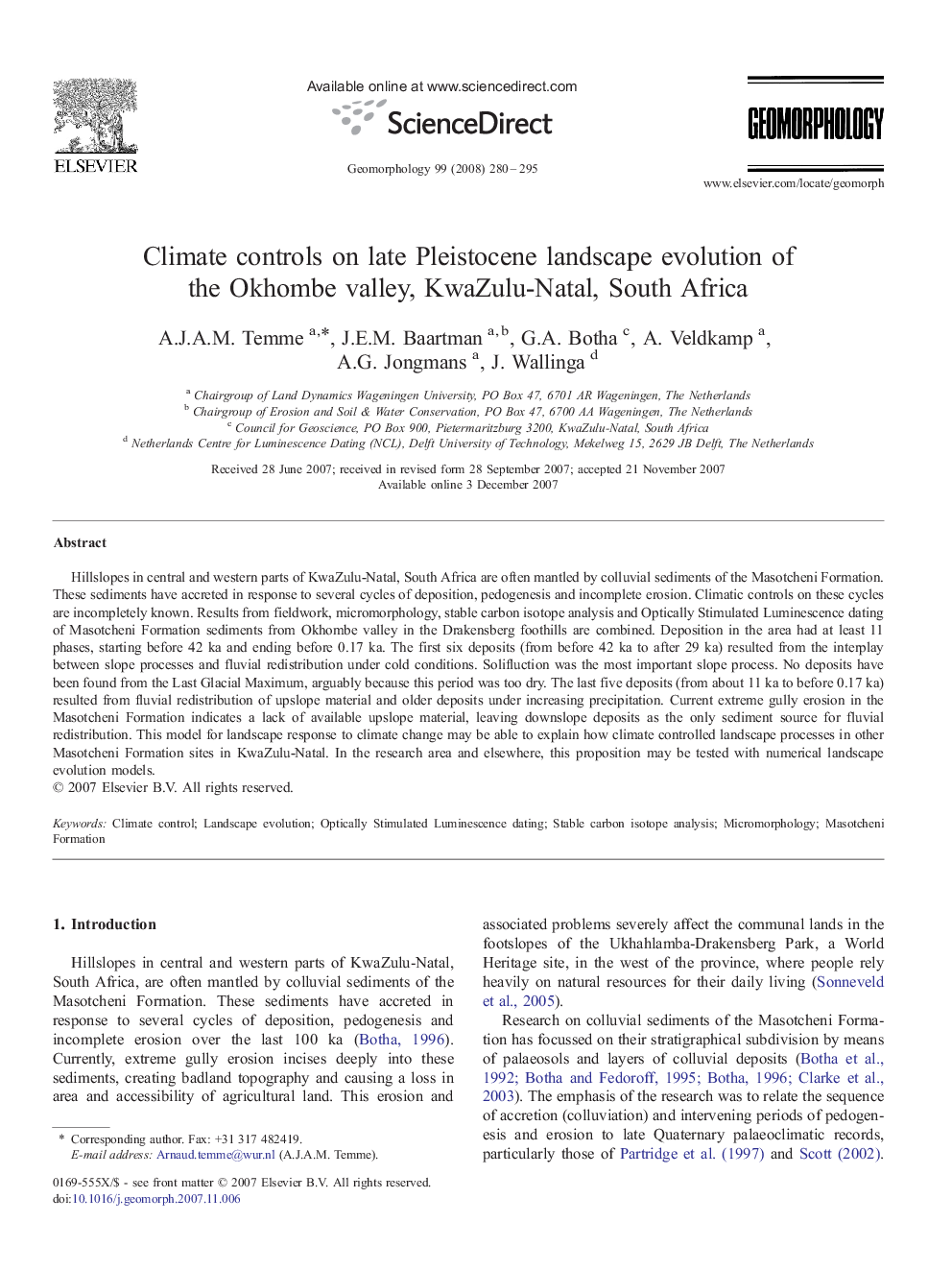| Article ID | Journal | Published Year | Pages | File Type |
|---|---|---|---|---|
| 4687067 | Geomorphology | 2008 | 16 Pages |
Hillslopes in central and western parts of KwaZulu-Natal, South Africa are often mantled by colluvial sediments of the Masotcheni Formation. These sediments have accreted in response to several cycles of deposition, pedogenesis and incomplete erosion. Climatic controls on these cycles are incompletely known. Results from fieldwork, micromorphology, stable carbon isotope analysis and Optically Stimulated Luminescence dating of Masotcheni Formation sediments from Okhombe valley in the Drakensberg foothills are combined. Deposition in the area had at least 11 phases, starting before 42 ka and ending before 0.17 ka. The first six deposits (from before 42 ka to after 29 ka) resulted from the interplay between slope processes and fluvial redistribution under cold conditions. Solifluction was the most important slope process. No deposits have been found from the Last Glacial Maximum, arguably because this period was too dry. The last five deposits (from about 11 ka to before 0.17 ka) resulted from fluvial redistribution of upslope material and older deposits under increasing precipitation. Current extreme gully erosion in the Masotcheni Formation indicates a lack of available upslope material, leaving downslope deposits as the only sediment source for fluvial redistribution. This model for landscape response to climate change may be able to explain how climate controlled landscape processes in other Masotcheni Formation sites in KwaZulu-Natal. In the research area and elsewhere, this proposition may be tested with numerical landscape evolution models.
